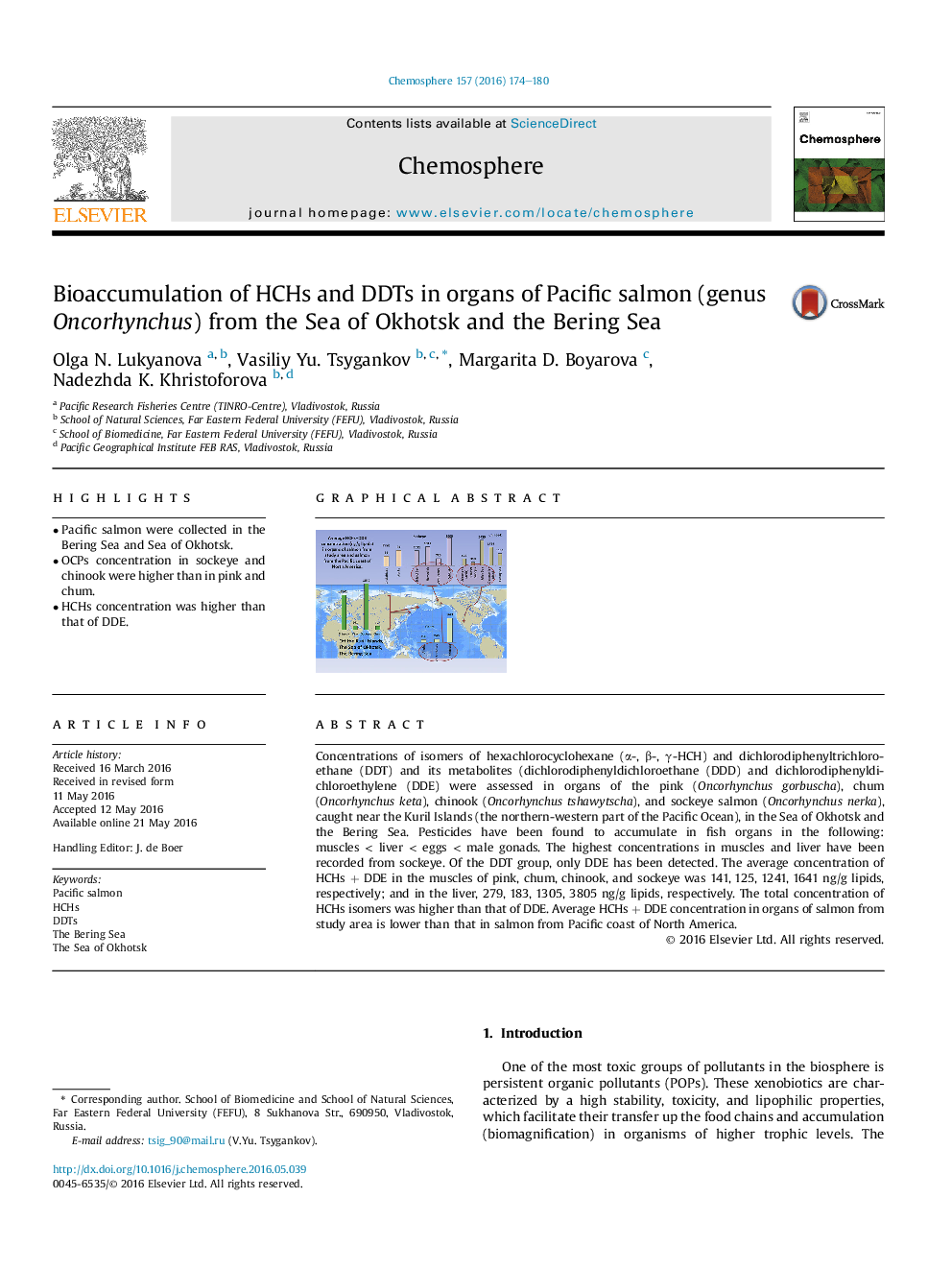| Article ID | Journal | Published Year | Pages | File Type |
|---|---|---|---|---|
| 4407597 | Chemosphere | 2016 | 7 Pages |
•Pacific salmon were collected in the Bering Sea and Sea of Okhotsk.•OCPs concentration in sockeye and chinook were higher than in pink and chum.•HCHs concentration was higher than that of DDE.
Concentrations of isomers of hexachlorocyclohexane (α-, β-, γ-HCH) and dichlorodiphenyltrichloroethane (DDT) and its metabolites (dichlorodiphenyldichloroethane (DDD) and dichlorodiphenyldichloroethylene (DDE) were assessed in organs of the pink (Oncorhynchus gorbuscha), chum (Oncorhynchus keta), chinook (Oncorhynchus tshawytscha), and sockeye salmon (Oncorhynchus nerka), caught near the Kuril Islands (the northern-western part of the Pacific Ocean), in the Sea of Okhotsk and the Bering Sea. Pesticides have been found to accumulate in fish organs in the following: muscles < liver < eggs < male gonads. The highest concentrations in muscles and liver have been recorded from sockeye. Of the DDT group, only DDE has been detected. The average concentration of HCHs + DDE in the muscles of pink, chum, chinook, and sockeye was 141, 125, 1241, 1641 ng/g lipids, respectively; and in the liver, 279, 183, 1305, 3805 ng/g lipids, respectively. The total concentration of HCHs isomers was higher than that of DDE. Average HCHs + DDE concentration in organs of salmon from study area is lower than that in salmon from Pacific coast of North America.
Graphical abstractFigure optionsDownload full-size imageDownload as PowerPoint slide
